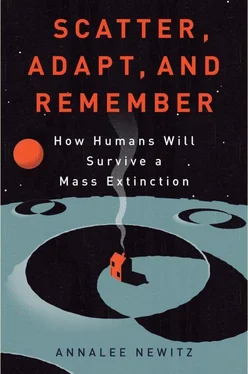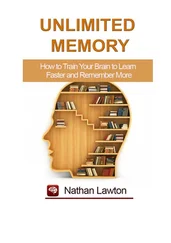Without access to medicine, crowded together in densely packed slums, the London poor succumbed to plague swiftly. New York University’s literary historian Ernest Gilman has pored over writings from this era, where representatives of the Church insisted that the Black Death was a punishment from God. But, he noted, by the seventeenth century these men were in dialogue with a group sneeringly referred to as “mere naturians,” or proto-scientific thinkers who believed the plague had a purely earthly origin. Though most medicine at the time would be called quackery today, the official government position was nevertheless that the disease was contagious. It was said to spread through “the miasma,” the air. These ideas led to the practice of state-enforced quarantining, but also to people wearing face masks and even washing coins in vinegar when they changed hands. Medicine and science were ideas that had achieved some social currency during Pepys’s time; a lot had changed since Chaucer dared to make fun of the Catholic Church in The Canterbury Tales .
What had also changed was the marketplace. A new class of merchants and tradespeople had come to occupy a central place in England and Europe’s economic systems, and they established trade routes throughout the world. Cities became central to this new economy, and impoverished groups flocked to the slums of big cities like London, hoping to find their fortunes in the world of trade rather than farming. As a result, Pepys could observe the stark class division between those touched by plague and those decimated by it. Involved as he was in naval matters and trade, Pepys could also profit from the very market systems that most helped set up conditions for the Great Plague. Tragically, the first stirrings of global capitalism and disease seemed to go hand in hand.
In his diary, Pepys also noted something that’s crucial for understanding the spread of epidemics during the seventeenth century and beyond: Mortality rates among the poor were skyrocketing, and yet at the same time were not being recorded. He wrote that many believed the death toll was likely 2,500 more people than officially reported, “partly from the poor that cannot be taken notice of through the greatness of the number.”
Nothing would make that more obvious than the devastating epidemics that were sweeping the Americas while Pepys was getting rich back in London.
The Plagues of Colonialism
In Pepys’s time, Europeans had been carving out colonies in the Americas for over a century and a half. A lucrative trade in goods and people turned the Atlantic into a maze of shipping lanes, packed with cargo vessels bearing everything from gold and slaves to animals and produce. They also bore disease.
One of the enduring questions in American history is why ragtag groups of European and English colonists were able, in just a couple of centuries, to claim the riches of two continents packed with enormous cities in the Aztec and Inca empires, along with highly trained armies, vast farms, and millions of people. In the seventeenth century, the dominant theory would have been that God was dishing out justice to the heathen natives. Up until the mid-twentieth century, historians and anthropologists offered rationales that weren’t much better. They believed the natives were too innocent, savage, stupid, or inferior to mount a decent defense against the European invaders. In the late 1990s, Jared Diamond argued in Guns, Germs, and Steel that the Inca weren’t culturally inferior, but instead victims of historical and environmental circumstances. Diamond popularized the idea that the Inca fell to the Spanish because the Americans’ “stone age” technology and lack of writing left them unprepared to deal with the Europeans’ guns, cavalry, and greater stores of knowledge. These issues, as much as the plagues Europeans brought, were what left the Inca empire vulnerable to conquest.
Over the past decade, however, new information has emerged about the civilizations of the Americas. As Charles Mann explains in his book 1491, an exploration of new scholarship on pre-Columbian life, the Inca were technologically advanced enough to have defeated the Spanish. They had a highly developed system of writing called quipu, created by making different kinds of knots out of string, which is only today finally being deciphered (sadly, the Spanish burned most of the quipu libraries). True, the Inca did not have horses or metal weapons, but they had textile technologies that allowed them to weave massive boats from rushes, hurl flaming rocks over great distances using slingshots, and of course they had the advantage of a hilly terrain that was nearly impossible for horses to climb. What felled the Inca was quite simply a plague on the scale of what Chaucer witnessed as a boy, coupled with a raging civil war caused by a power vacuum left when several Inca leaders succumbed to smallpox.
By the time the conquistadors arrived in full force, South America was already riddled with plagues that spread easily on the vast trade routes of the Inca and Aztec empires. Imagine if a group of warriors, armed to the teeth, had descended on London in the wake of the Peasants’ Revolt. The city was depleted, and its inhabitants were squabbling violently over what to do next. It would have been easy for even a small band of foreign soldiers to step in and lay waste to the city. As Mann would have it, Europeans did not conquer the Americas with technology and writing. Instead, they inadvertently imported smallpox, influenza, and bubonic plague to the Americas, and those diseases destroyed native communities long before conquistadors like Francisco Pizarro could come in to claim victory over them.
Many of these new theories were first popularized in the historian Alfred Crosby’s influential 1972 book The Columbian Exchange: Biological and Cultural Consequences of 1492 . In it, Crosby argues that European and American meetings constituted a vast environmental experiment, in which plants, animals, and microbes that had been separated for sometimes millions of years were suddenly thrown together. Peas, squash, potatoes, tomatoes, maize, and other native American crops were brought back to Europe; horses, pigs, and cows were brought to the Americas. Syphilis returned from the New World in the bodies of explorers, and Europe’s plagues arrived in the New World the same way.
Just as people in Pepys’s London had no scientific way to respond to plague, neither did citizens of the great cities like Tenochtitlán and Cuzco, in regions that later became Mexico and Peru. Based mostly on written accounts of the period from explorers, as well as death records in missions, many historians and anthropologists believe that as much as 90 percent of the American population was eventually felled by epidemics. Arizona State University forensic archaeologist Jane Buikstra, who has studied the remains of people who lived before colonial contact in Mexico and Peru, believes that the Columbian plagues hit populations that were already vulnerable. In the bones of people born before Europeans arrived, she said, “you see evidence of warfare and malnutrition. Some groups were highly stressed, living in constrained, unhealthy conditions with a lot of garbage around them.” Stressed groups would be more vulnerable to introduced disease—much the way the urban slum dwellers in seventeenth-century London were, or the starved peasants in the Middle Ages.
Unlike England, however, the Americas were in the process of being colonized by foreign powers. And that, according to the historian Paul Kelton, of the University of Kansas, may have meant the difference between the typical European epidemic death tolls (up to 60 percent in the wake of the Black Death) and typical American ones (up to 90 percent). Kelton has studied historical records of North American native cultures like the Cherokee, and believes that the social and economic upheavals caused by colonialism exacerbated the virulence of American plagues. Without the colonists’ trade routes linking previously isolated groups and regions together, Kelton argues, epidemics wouldn’t have spread as rapidly. The main vector of disease on these trade routes would have been slaves taken from the American population. Even though most people don’t know about it today, the traffic in native American slaves was a thriving business in seventeenth-century America. Slavers played into already existing tensions between rival groups, encouraging the victors in battle to trade their captives with Europeans for goods ranging from guns and powder to horses and wool clothes. Slave raids, in turn, intensified warfare, and disrupted centuries-old patterns of hunting and farming. Groups decimated by slavery, their strongest warriors shipped overseas to sugar plantations in the West Indies, hid from their enemies in fortified villages and were unable to secure food supplies they needed. When smallpox hit these villages, the death tolls were stupendous.
Читать дальше






![Аннали Ньюиц - Автономность [litres]](/books/424681/annali-nyuic-avtonomnost-litres-thumb.webp)





